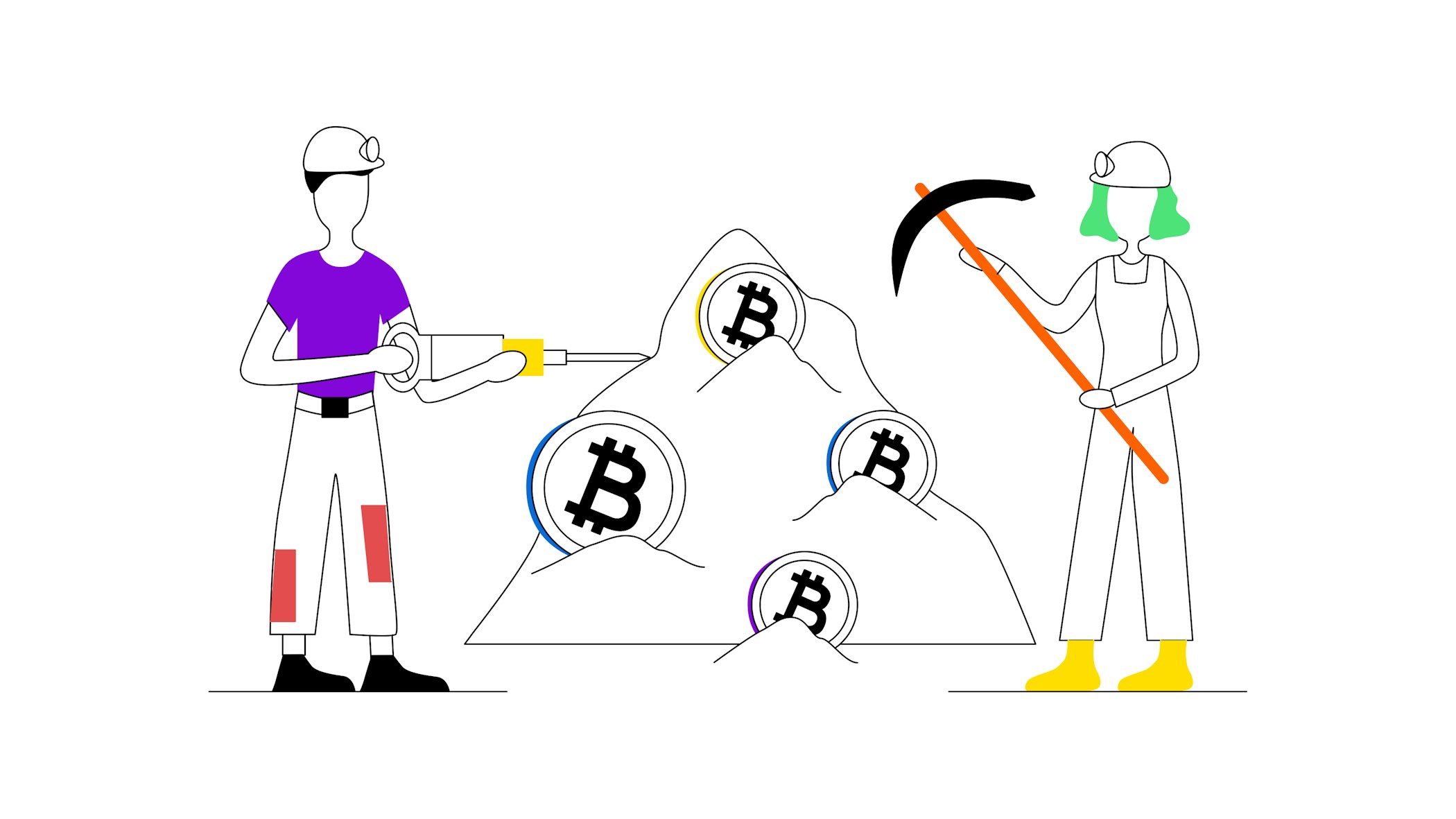
What does mining difficulty mean?
Mining difficulty is a unit of measurement used in the process of mining a cryptocurrency such as Bitcoin and refers to how difficult and time-consuming it is to find the right hash for each block.
Mining difficulty measures how difficult it is to solve the complex cryptographic puzzles used in the mining process.
The difficulty of mining new units increases or decreases over time, depending on the number of miners in the network
Increases in difficulty are necessary in order to maintain the target block time.
What is mining difficulty in crypto mining?
For cryptocurrencies that use a Proof-of-Work (PoW) validation system, creating new cryptocurrencies involves “miners” using their computers to solve complex mathematical puzzles. In the case of Bitcoin, miners’ computers, also called nodes, collect and bundle individual transactions into blocks every ten minutes, which is the fixed “block time” of Bitcoin. The computers then compete to solve a complex cryptographic puzzle to be the first to validate the new block for the blockchain.
As a cryptocurrency like Bitcoin becomes more popular, the number of computers participating in this peer-to-peer validation network increases. With more participants and more computing power, the so-called “hashpower” of the entire network increases accordingly. This is also referred to as the mining difficulty or difficulty.
Mining difficulty in the Bitcoin network is adjusted automatically after 2,016 blocks have been mined in the network. An adjustment of difficulty upwards or downwards depends on the number of participants in the mining network and their combined hashpower.
New to Bitpanda? Get started today!
Sign up hereMining equipment
In the early days of mining, miners used the central processing units (CPUs) of their PCs to mine Bitcoin. Miners eventually realised that graphics cards (GPUs) are better suited for mining Bitcoin. However, graphics cards also need more energy. In recent years, special “ASICs” (application-specific integrated circuit chips) have been developed specifically for Bitcoin mining. Presently, Bitcoin and a number of other digital currencies are mined via mining pools, where lots of miners join forces and combine their hash rates in the quest for block rewards.
The computational difficulty of crypto mining
Solving mathematical puzzles for valid block creation requires huge amounts of computational power. Because the difficulty is rising continually, miners are joining forces in Bitcoin mining pools to solve mathematical puzzles together. The first individual miner or the mining pool that finds the right hash gets the block reward.
Usually, block rewards consist of new coins or tokens native to a blockchain network such as Bitcoin. In a mining pool, block rewards are split among participants in proportion to their share of computing power in the mining pool. This way each participant is adequately invested in the process.
Bitcoin’s limited supply
Unlike gold, of which there are still undiscovered deposits all over the planet (and in space), Bitcoin has a limited and finite number of 21 million units. As of April 2023, about 19 million Bitcoins have already been mined, and it is estimated that the last Bitcoin will be mined by 2140.
After all 21 million bitcoins have been mined, miners will still need to contribute to the Bitcoin network in order to keep it running. New blocks will still be generated, but the rewards will change. Instead of getting new coins as a block reward, miners will receive a share of the transaction fees spent by people who send transactions within the network.
Are you ready to buy cryptocurrencies?
Get started nowDISCLAIMER
This article does not constitute investment advice, nor is it an offer or invitation to purchase any crypto assets.
This article is for general purposes of information only and no representation or warranty, either expressed or implied, is made as to, and no reliance should be placed on, the fairness, accuracy, completeness or correctness of this article or opinions contained herein.
Some statements contained in this article may be of future expectations that are based on our current views and assumptions and involve uncertainties that could cause actual results, performance or events which differ from those statements.
None of the Bitpanda GmbH nor any of its affiliates, advisors or representatives shall have any liability whatsoever arising in connection with this article.
Please note that an investment in crypto assets carries risks in addition to the opportunities described above.